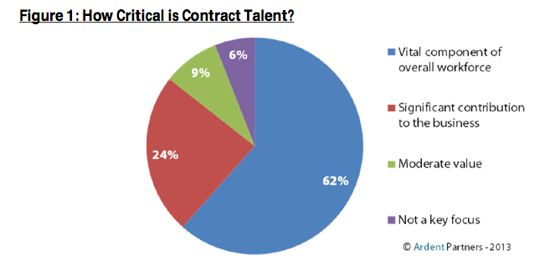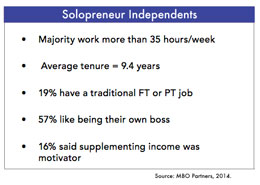
The Changing Workplace
Let’s face it. Things just ain’t the same at work. This week’s article takes a look at some technological, economic, and social factors that are changing the way we work and opening new possibilities for those who would rather opt out of the conventional workforce.
The traditional world of work is becoming less conventional. Workforce changes started with rapid advances in technology during the 1990s. The internet age and improvements in automation increased efficiency and changed the requirements for human labor. Secretaries, travel agents, even machinists lost jobs to new technology. During the Great Recession, the process accelerated. Economic pressures focused businesses on the need for cost controls, The result was downsizing on a level not seen since the 1920s and a complete rethink of workforce strategies.
Businesses streamlined and phased out positions, then trimmed more employees to cut costs. At the end of it, they were left with problems that needed solving, but no resources to solve them. With hiring restrictions on and strained budgets, they couldn’t develop the talent they needed for key projects in-house. They began looking outside for project expertise that they could hire on a contractual basis. Many of the former employees became contractors.
Workers from the Baby Boomer generation were hit hard by the layoffs. With higher salaries, mid-level managers of this age group were the first to go. Many of these former employees had specialized skills and knowledge, but were considered too costly to reacquire on a permanent basis.
The Boomers were joined by a younger group that was also having difficulty finding conventional jobs. Many Millennials had extended their education because of the dearth of jobs in the late 2000s. When the economy began to recover, job growth lagged. Even with advanced degrees and good technical skills, many found themselves shut out from conventional employment.
Solopreneurs and the Open Workforce
Whether intentional or by necessity, these two groups of talented workers discovered that there was opportunity in microbusiness. They became “solopreneurs” – consultants, freelancers, and contractors, putting together very small businesses to keep themselves afloat. These independent workers developed and refined their skillsets and found that with two or three clients they could make a living. In many cases, the solos met the needs of employers who in previous years might have offered full-time work. They supplied short-term demand for skilled resources and talent without the additional liabilities of benefits and long-term commitments.

This combination of available freelance or contract talent with cost controls and downsizing has reshaped the workforce. CGMA, the UK based trade association for management accountants, calls the new development the “open workforce.” In a 2014 White Paper, New Ways of Working . . . Managing the Open Workforce, they define an open workforce as “one in which talent and resources are spread across a complex mix of in-house teams, freelancers, contractors, and external business partners.” Their 2014 survey found that over a third of global businesses are relying on external talent to meet their business goals. In 25% of the companies they surveyed, over half of the workforce is external to the organization. In another study, Ardent Partners found that 62% of businesses surveyed considered contractual workers to be “a vital component of the overall workforce.”
How Do Businesses Benefit?
While the “contingent workforce” was created as a result of cost containment moves at larger companies, the CGMA report concludes that the new environment has produced some definable benefits for organizations who utilize outside talent. They believe that the move towards an open workforce is more than a trend and describe a “workplace of the future” that is characterized by organizations which are:
- Open – both in terms of talent sourcing and the ideas that come from independent, highly-skilled sources.
- Agile – in their ability to respond to change.
- Innovative and Collaborative – as traditional offices are replaced by remote communications, potentially on a global scale.
- Automated – Humans and technology will interact to a greater extent than ever before.
Here’s how the CGMA report concludes:
Above all, these organisations will possess highly permeable boundaries. Key projects and tasks will flow seamlessly across a complex and constantly shifting network of employees, collaborators and business partners. As they become more dependent on the open workforce, companies will need to work like an orchestra in which a diverse collection of individuals is united into a harmonious unit. The talent base will change as a new requirement arises, just as members of an orchestra will swap to play a different piece of music. (pp. 14 – 15).
What’s in it for the Solopreneur?
Sonorous prose notwithstanding, it’s easy to assume that the benefits are accrue to the corporations. The businesses contain costs and increase profits from the ability to hire additional skill on a short-term basis. The solo foregoes payroll and benefits and accepts a contractual agreement or project commitment. Presumably, the solopreneur would always be better off as an employee.
Perhaps, but many of them don’t think so. While the job market hasn’t completely recovered, improvement has been steady since 2012. You’d think that solos would be returning en masse to their day jobs, but that’s not the case. Instead, growth in the independent worker category continues to outpace conventional job growth.
MBO Partners, a Herndon, VA based provider of management services and technology platforms for independent professionals, has studied the solopreneur segment over several years. In their 2014 State of Independence in America Report, they cite 12.5% growth in the independent worker category since 2011. They define solos as “those who regularly work 15 hours or more as independents, with most working more than 35 hours per week.” The growth in this segment is more than 11 times the 1.1% growth in the overall U.S. labor force during the period measured. Further, the MBO report states that “the majority of independent workers continue to be satisfied (82%) and plan on staying independent in the future (76%).
MBO Partners splits independent workers into two categories. True solopreneurs, who derive most of their revenue from their solo efforts, currently number 17.9 million in the US, roughly 12% of the total (employed) labor force of 147 million. . This segment is expected to grow to 24.5 million by 2019. Part timers (MBO calls these “side-giggers”), who work independently for 15 hours or less each week, make up the other category. They number around 12 million today, but could grow to 16.5 million in 5 years. The total number of independent workers in the economy could be as large as 40 million in 2019, if current trends persist.
They identify 3 benefits for independent workers:
- Control over the kind of work they do
- Flexibility – especially to determine when and where they work
- Autonomy – to work in the way that they believe is best.
What does a Solo Career look like?
 For the full time solos, their career is essentially a micro-business startup. Especially at the outset, many solos combine their new venture with a part-time traditional job (15% according to the MBO Partners report). 60% have more than one revenue stream, combining revenue from contract work, consulting, and even product sales.
For the full time solos, their career is essentially a micro-business startup. Especially at the outset, many solos combine their new venture with a part-time traditional job (15% according to the MBO Partners report). 60% have more than one revenue stream, combining revenue from contract work, consulting, and even product sales.
Many of the microbusinesses actually morph into larger enterprises. The MBO report indicates that 15% of the independents surveyed in 2014 intend to build larger businesses. They also estimate that more than 50% of small businesses with employees in the US started as solo enterprises.
Going it on your own isn’t for the faint-hearted, but the prospects for a solo career look pretty good. Increasing numbers of businesses are moving towards increased utilization of contingent employees in their workforces. The CGMA report found that over a third of the organizations surveyed planned to increase their use of contingent employees – consultants, external advisers, freelancers, and contractors. There are also collaborative prospects with other small businesses, who frequently look to outside expertise for help with problems and projects.
Getting Started
According to the MBO Partners study, “about 26 million American workers, 21 years and older who are not currently independent, are considering a shift to (solopreneurship) in the next 2-3 years.” If you’re planning a career change or moving from the military to a civilian career, becoming a solopreneur may be a good option.
The lifestyle advantages are attractive, but must be weighed against the predictable revenue streams and benefits of traditional work. To succeed as a solopreneur requires potentially more discipline than conventional work. There’s flexibility with time, but you’re also responsible for your own productivity. The expectation of output is built into contractual and consulting agreements – you must produce to get paid.
Startup costs must also be considered, along with the time required to develop enough business to pay the bills. For many solos, a home office, a computer, and a cell phone are the simple basics required for business. Even with low startup costs, it may take a couple of years to generate the revenue needed to cover monthly expenses. It’s important to make a realistic projection of cash flow requirements against savings or reserves before you get started.
There are several other considerations:
- Defining your business – it’s important to go into business with a defined product and a business plan.
- Organization and bookkeeping – tax advantages of owning a small business can partially offset the negatives of unpredictable revenues and no benefits. Get a good accountant and listen to their advice.
- Finding customers – This is most important. Do you have a network of contacts? How will you go to market?
If you’re thinking about a solo career, the first step is some honest self-evaluation. It may be helpful to develop a Career Action Plan to help you weigh options. Putting together a private-sector resume is certainly a key component. It will help you to look carefully and objectively at your experience and skills, and to decide if there is a way to shape what you can do into a business that the market demands. You’ll also need a resume as you grow your network and begin submitting proposals for contracts and consulting work.
If you’re considering a transition from the military into a solopreneurial career, there are a lot of great resources for Veterans who are interested in government contracts. The federal government gives special consideration for contract awards to businesses owned by service disabled Veterans.
While the outlook for traditional employment in the US continues to improve, there are also some interesting and potentially rewarding opportunities that don’t fit the conventional mold. Forward thinking businesses (and the government) are seeking solopreneurs to help with projects and to provide consulting assistance. If you’re looking for some flexibility with your next career move, this option may be worth investigating. The certified career coaches and resume writers at CareerPro Plus have helped literally thousands of job seekers with their next career move. Don’t hesitate to get in touch for a free consultation!
Additional Source:
The State of Contingent Workforce Management Research Report, Ardent Partners, June 2014.



